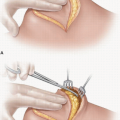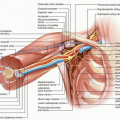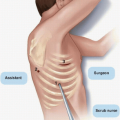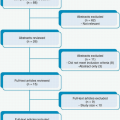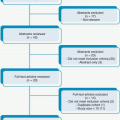In the 1970s and 1980s, accurate pretreatment staging of PDAC was impossible because only low-resolution cross-sectional imaging technologies were available at that time. Discrimination between localized and disseminated disease and between resectable and nonresectable primary tumors was therefore largely made in the operating room at exploratory surgery. Cross-sectional imaging has now improved to the point at which the primary tumor’s anatomy and relationship to the mesenteric vasculature can be determined radiographically with great precision, and metastatic disease can be safely ruled out in the majority of patients. Furthermore, studies correlating radiographic findings to surgical outcomes have led to the establishment of objective staging designations that reflect the surgeon’s likelihood of achieving a margin-negative resection.
Pretreatment staging with computed tomography or magnetic resonance imaging is now used to help optimize and individualize the treatment of patients with localized PDAC (
Table I-1 and
Fig. I-1).
7,
8,
9,
10 Locally advanced disease is represented radiographically as the cancer’s extensive involvement of the mesenteric vasculature. Complete resection of the primary cancer to microscopically clear margins (R0 resection) is rarely feasible for patients with this stage of disease, and attempts to use neoadjuvant therapy to reduce the size or anatomic extent of such cancers and thus improve the surgeon’s ability to remove them have been unsuccessful.
11 Therefore, patients with locally advanced cancers are typically treated with chemotherapy
and/or chemoradiation. At the other end of the spectrum, potentially resectable cancers on computed tomography scans appear to be separate from the mesenteric vasculature or approximate the vessels only minimally, and such tumors can routinely be resected safely to negative margins, so surgery is generally recommended as the initial therapeutic approach.
12 Finally, borderline resectable tumors radiographically appear to approximate the mesenteric vasculature to a limited degree. Patients with these tumors are at high risk for at least microscopically incomplete (R1) resection.
10


